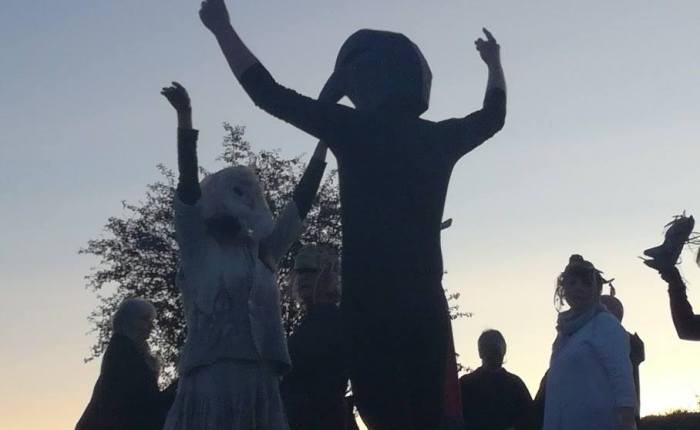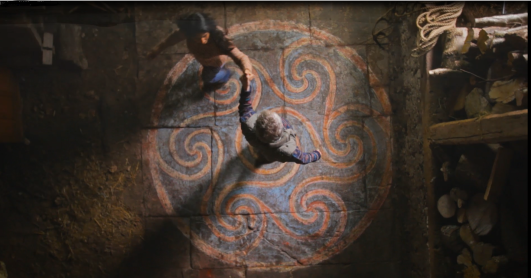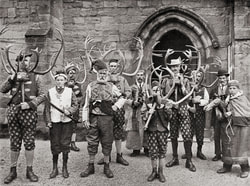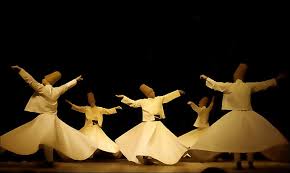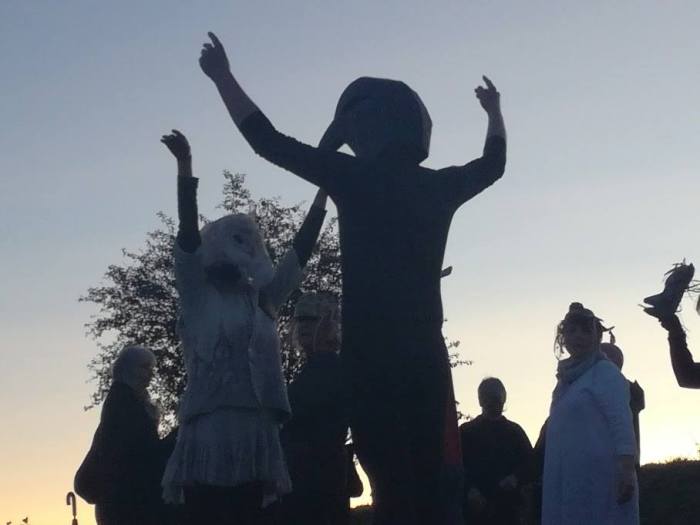
Last Saturday we had the first performance of our Dancing the World into Being outside in a landscape overlooking both the Black Mountains and the Brecon Beacons. You can see some more pics here. The response of audience was warm; in some cases people seemed deeply affected by the dance and its music (a capella choir,squeeze-box, gongs and percussion). One old friend said to me that she felt the dance spoke to her body and I was pleased about that, because that’s what we intended.
Every since I started teaching beginners’ T’ai Chi, I have been aware of how tense most people are, how armoured our bodies are, and how long it can take for people to relax, breathe and move without strain. It may be that our compulsive digital activities are closing down our physical and sensory awareness – after all, so far there’s no smell, touch or taste on the internet. We can get trapped in a world made of words and images, imprisoned by a circle of angry flaming, conflicting interpretations of reality, competing views of what reality is. I can’t be the only one who can finish an internet session feeling tense and stirred up – not in a good way.
Thank God for music, poetry, gardening, films and novels which know how to lead us out of this trap. And dance, I believe, both doing it and watching it, is the means par excellence of bypassing the sinister sentinels of the linear-verbal world and offering us a way to vivid, sensory and emotional experience,
Dance has a strong connection with mathematics – many folk dances weave complex knots and patterns, play with twos, threes, sixes, sevens, eights, here’s a diagram from our choreographer, Gillian’s notes.

These can all be related to sacred geometry, which is one of the ways I discovered years ago to lift my mind up a level into a liberating (though sometimes scary) and more abstract realm.
This realm is a simpler place than our crabby catastrophising world, and it points the way to understanding how something can come from nothing (some scientists and mathematicians can take us there too, as long as their agenda is not too narrow). If you are interested in this kind of thing, have a look at these sites – Sareoso and Singinghead.
But for me, the biggest virtues of mounting a dance performance like ours is that it hints at a real mystery – how something comes from nothing – via a creation myth buried in an ancient Welsh tale, the story ‘Math son of Mathonwy’ from the Mabinogion. Our dance is intended to take you back into a mode of being and perceiving which our ancestors knew. Certainly they could not afford to be cut off from their bodies and their senses.
These ancient tales are a gift from them to us, but the rub is that the stories from the Mabinogion can’t be appreciated properly and understood by the linear-logical mind. They need to be acted out, danced, played with, listened to in English and in Welsh. And then, just maybe we can hear our ancestors whispering to us, dancing with us. And I think we need to listen, we need to join in.
There’s another chance to see our dance at the Globe in Hay on Saturday October 21. details here.

